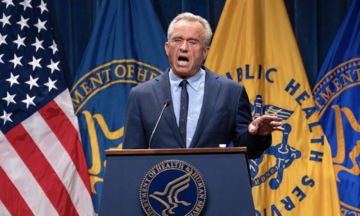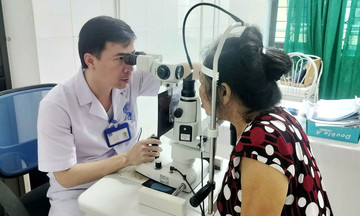Gynecomastia is the unusual development of breast tissue in one or both breasts, according to Dr. Ta Thi Hong Thuy, Deputy Head of the Department of Plastic and Reconstructive Surgery at Bach Mai Hospital. This condition can occur at any age, from newborns and adolescents to adults and the elderly.
An estimated 50-70% of men experience some degree of breast enlargement at some point in their lives. Some patients even report noticeable breast pain, similar to what women experience during their menstrual cycle. This can cause anxiety, self-consciousness, and silent suffering.
The primary cause is a hormonal imbalance, such as increased estrogen, decreased androgen, or androgen receptor deficiency. If hormone levels are adjusted, the condition may resolve on its own; however, most cases require medication or surgery.
Enlarged breasts in newborn boys are often due to maternal estrogen, and this typically disappears after birth as hormone levels decline. Gynecomastia is also common in adolescent males due to fluctuating sex hormones. The risk of developing this condition increases with age due to declining testosterone and changes in the male-to-female hormone ratio.
Certain medications like antidepressants, cardiovascular drugs, and hormones, along with underlying conditions like kidney failure, liver disease, pituitary tumors, and thyroid problems, can also contribute to gynecomastia. Additionally, tumors in the adrenal glands, pituitary gland, lungs, or testicles can disrupt hormone balance, leading to breast enlargement.
 |
Based on the morphological characteristics of breast tissue on ultrasound, Rohrich's classification is as follows: Grade 1: minimal hypertrophy 500g, grade 1 ptosis; Grade 4: severe hypertrophy with grade 2 or 3 ptosis. (Image provided by the hospital.)
Significantly, gynecomastia can be a warning sign of male breast cancer, although rare (about 1%). Individuals with Klinefelter syndrome have a 60 times higher risk of breast cancer than the general population.
Physically, the condition causes swelling, pain, and sensitivity, leading to body image issues. Psychologically, many individuals experience self-consciousness, limited social interaction, avoidance of physical activity, and potential depression.
Men who notice unusual breast development should seek medical attention promptly. Diagnosis is relatively straightforward, involving clinical examination, ultrasound, mammogram, hormone testing, and biopsy if a tumor is suspected.
Treatment depends on the cause and severity. If caused by obesity or metabolic disorders, dietary adjustments and exercise can be beneficial. Hormone therapy is necessary for hormonal imbalances. Mild cases may benefit from supportive bras. Surgery is considered when other methods are ineffective, removing excess breast tissue and reshaping the chest for cosmetic improvement.
For prevention, men should maintain a healthy weight, exercise regularly, and avoid unnecessary use of hormones and steroids. Regular health checkups are crucial, and men should consult a doctor if they experience breast enlargement, pain, discharge, or any other abnormalities.
Le Nga












